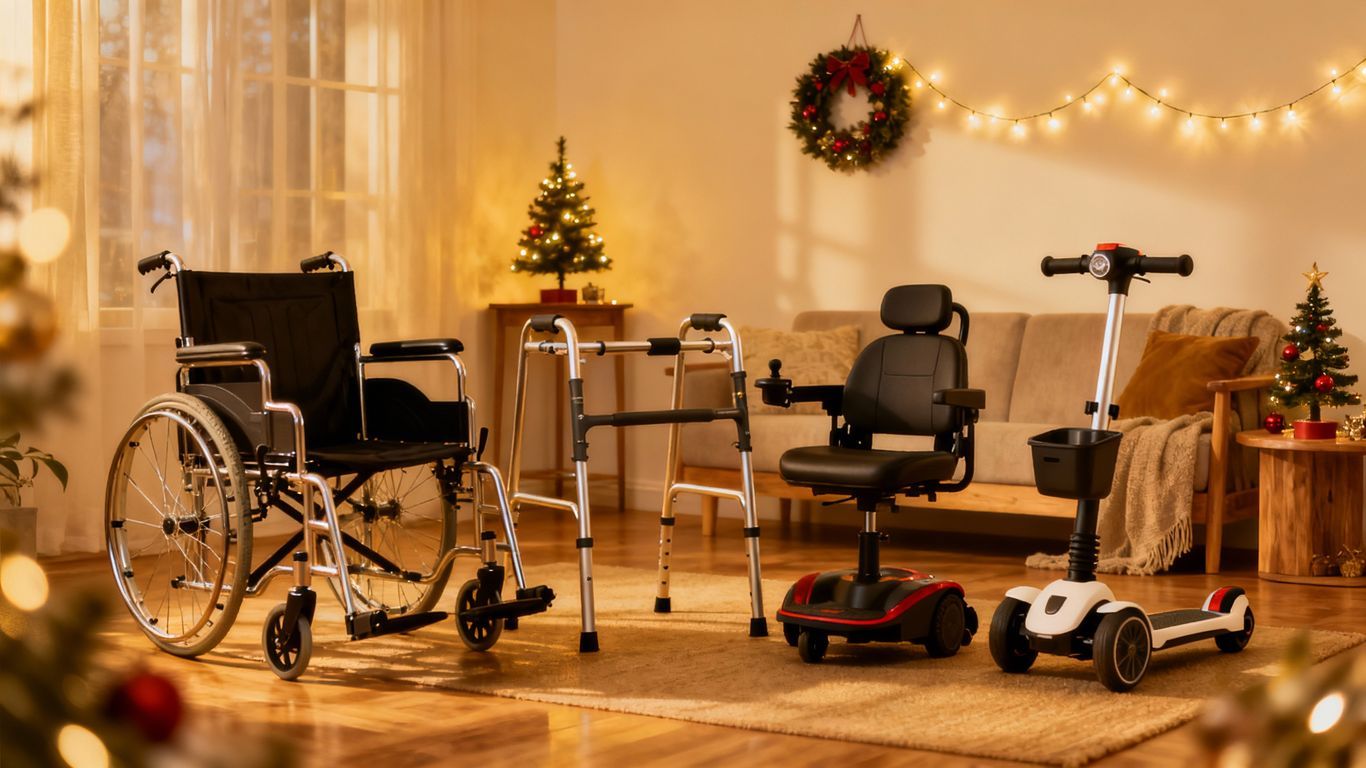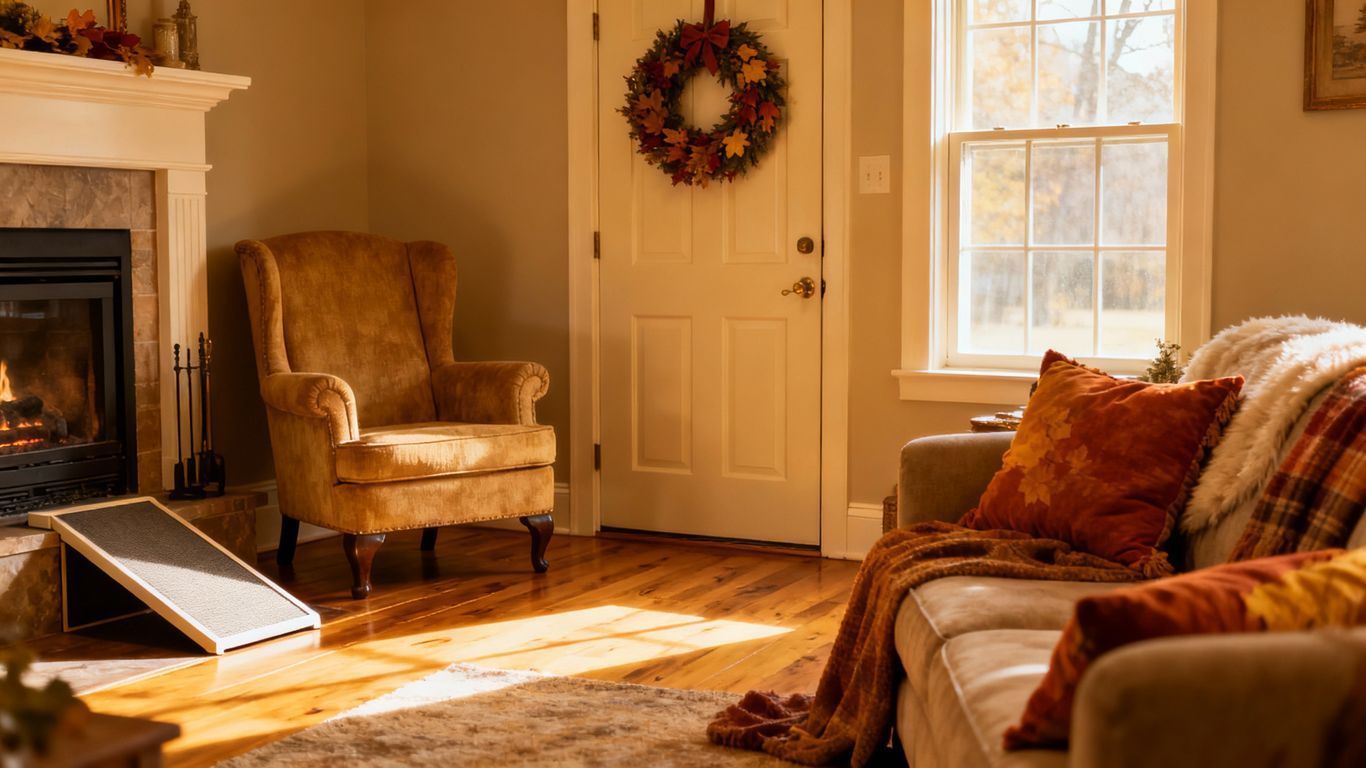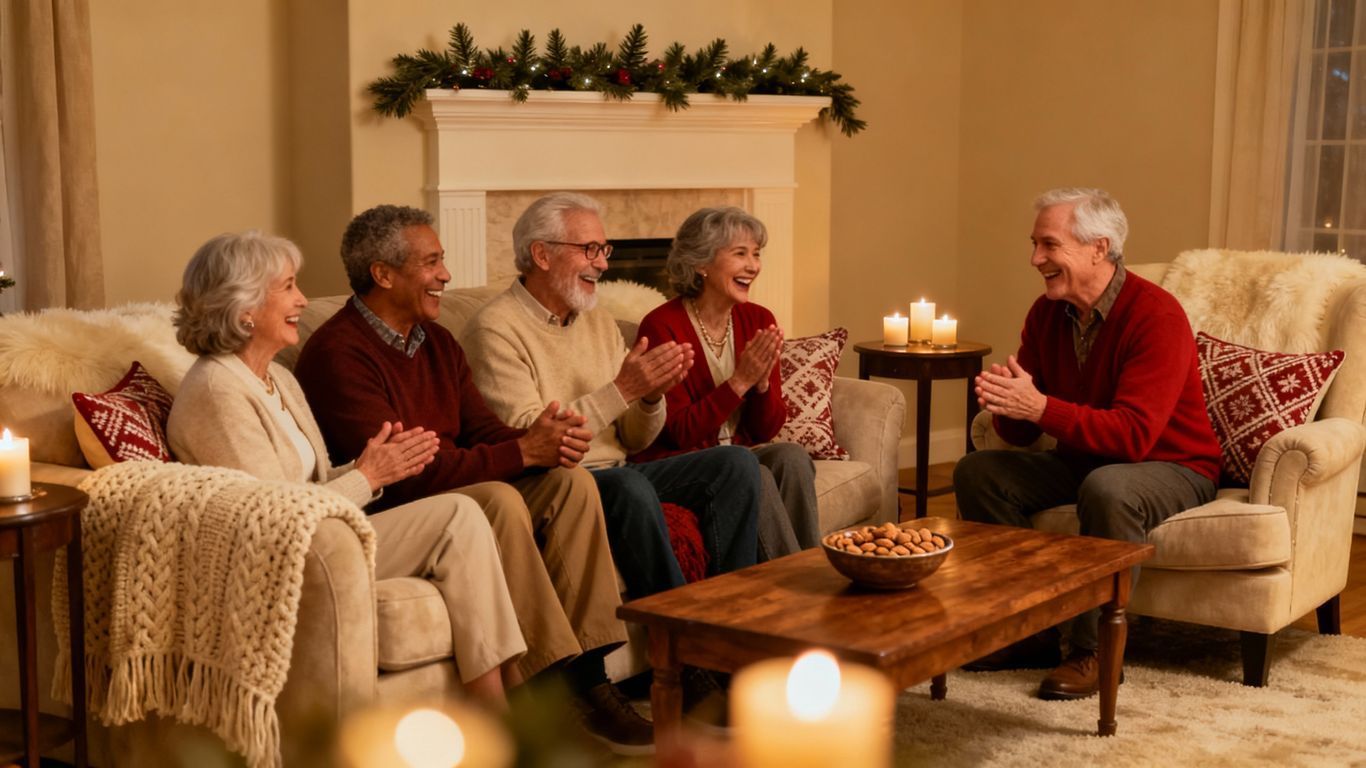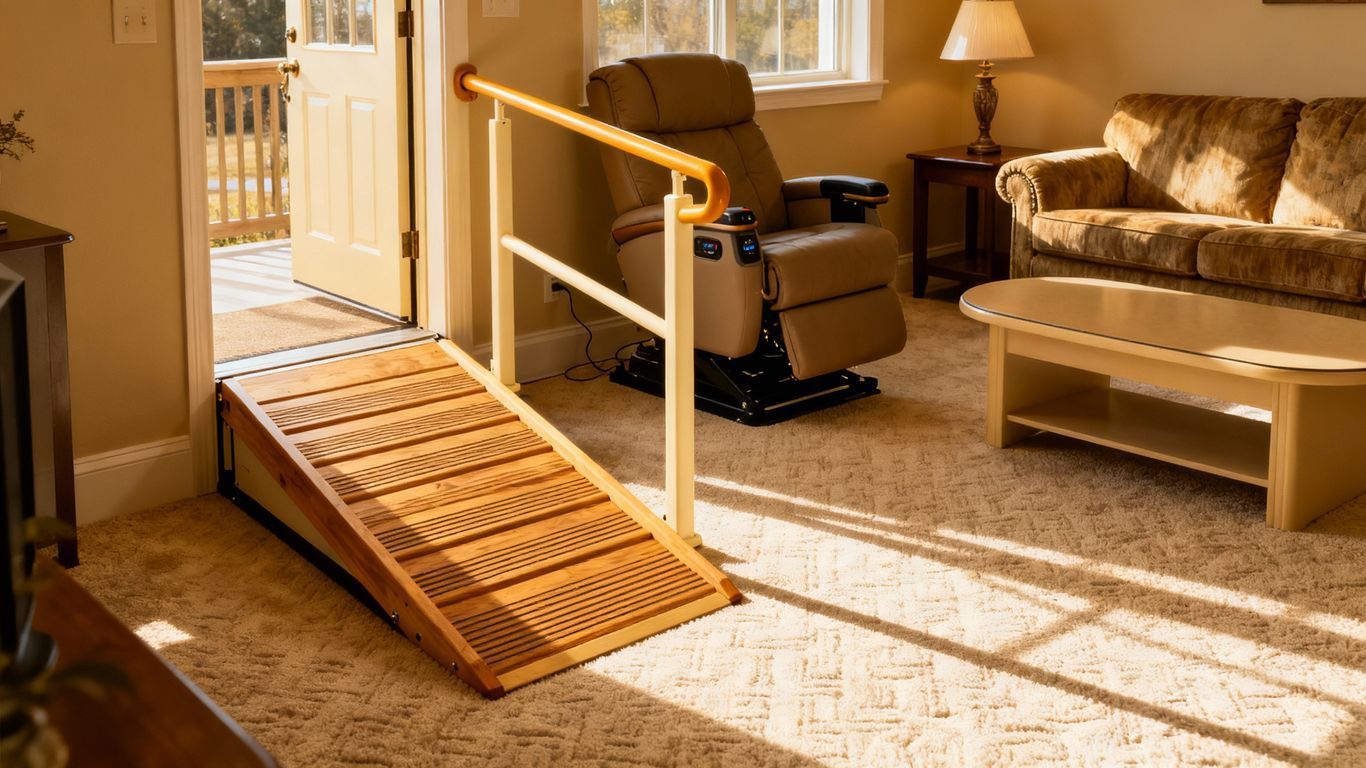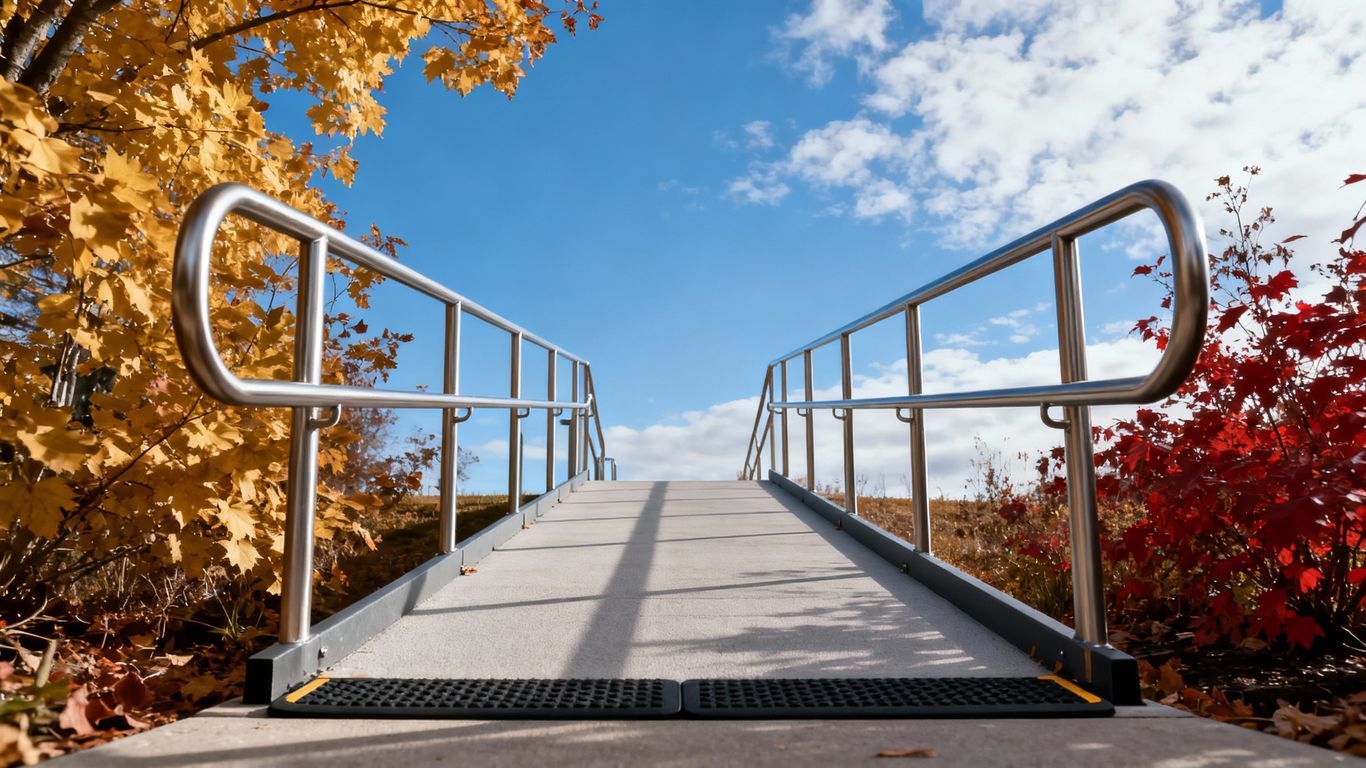Top Home Modifications for Aging in Place in Ringgold, Chickamauga & Surrounding Areas
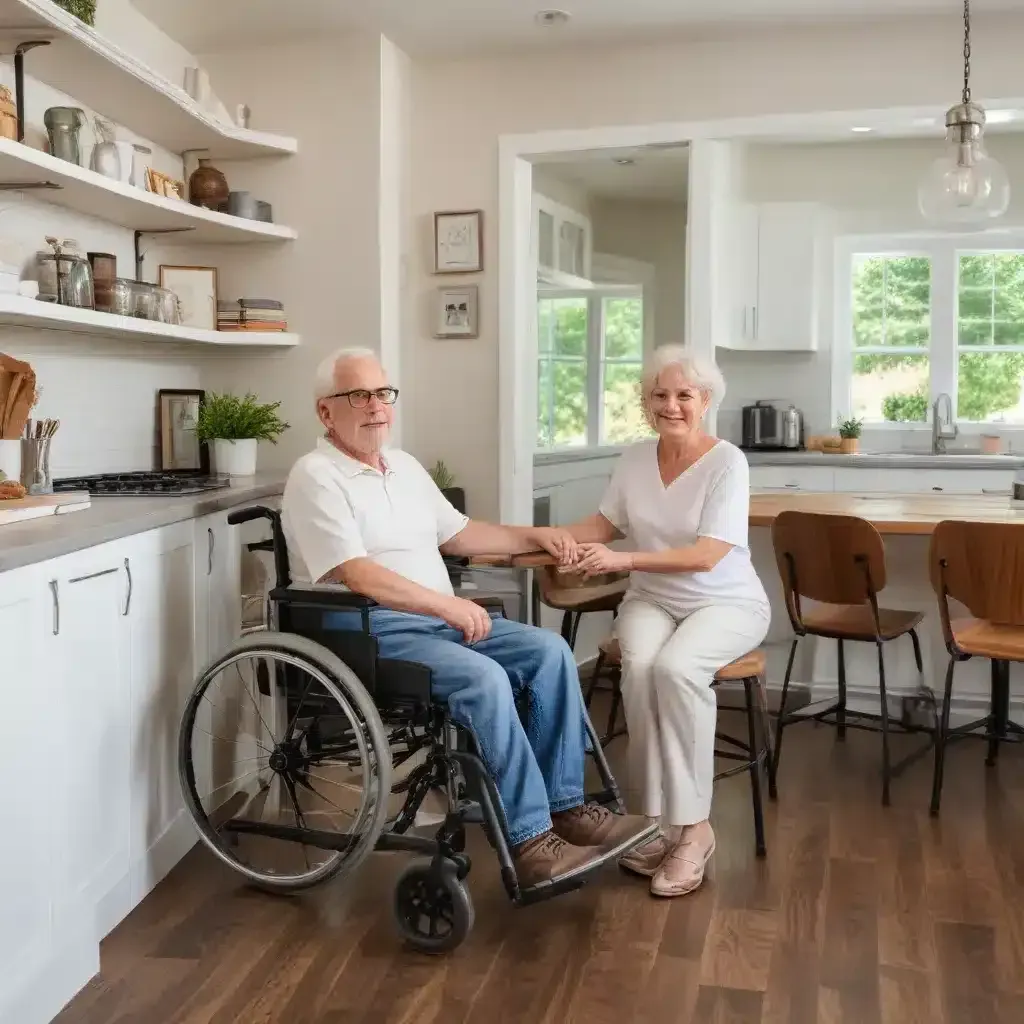
Thinking about staying in your home as you get older in the Ringgold and Chickamauga areas? That's a great idea, and there are lots of ways to make your current house work better for you. We're talking about home accessibility modifications that can make a big difference. It's not about huge renovations, but smart changes that help with daily life. Let's look at some of the top ways to make your home safer and easier to live in.
Key Takeaways
- Adding grab bars in bathrooms provides needed support.
- Stair lifts and ramps help with moving between floors or entryways.
- Walk-in tubs and shower seats make bathing safer.
- Lever handles on doors and faucets are easier to use.
- Better lighting and non-slip floors reduce fall risks.
1. Grab Bars
When you're thinking about making your home safer for aging in place, grab bars are probably one of the first things that come to mind. And for good reason! They offer a really solid point of support in areas where slips and falls are more likely to happen. Installing them properly is key to their effectiveness. You'll find them most useful in bathrooms, but they can be a big help in hallways or near stairs too.
Think about where you need that extra bit of stability. It's not just about preventing a fall, but also about making everyday tasks feel more manageable. Having a secure place to hold onto can make a big difference in confidence and independence.
Here are some common places to consider installing grab bars:
- Near the toilet: This is a big one. Having a bar to help with sitting down and standing up can be a game-changer.
- Inside the shower or tub: This is where most bathroom accidents happen. A bar here gives you something to hold onto while washing.
- Next to the shower or tub entrance: Getting in and out of the shower or tub can be tricky. A bar here provides support during this transition.
- Along hallways: If you have long hallways, a grab bar can offer support when walking.
- On stairways: For extra safety on stairs, bars can be placed on one or both sides.
When you're looking at grab bars, think about the type of surface they'll be mounted on and the weight they need to support. It's always a good idea to have them installed by someone who knows how to secure them properly into the wall studs. That way, you know they're going to hold up when you need them most.
2. Stair Lifts
For homes with multiple levels, stair lifts are a fantastic option to keep you independent and safe. Instead of struggling with stairs, a stair lift provides a comfortable seat that travels along a rail installed on your staircase. This means you can easily move between floors without the physical strain.
When looking into stair lifts, consider these points:
- Type of Staircase: Is it straight or curved? This will determine the type of lift needed.
- Weight Capacity: Make sure the lift can safely support the user.
- Power Source: Most run on electricity, often with battery backup.
- Installation: Professional installation is usually recommended for safety and proper function.
These lifts are a great way to maintain access to all parts of your home, especially if stairs have become a challenge. They offer a reliable and secure way to get around your house.
Choosing the right stair lift involves looking at the specific layout of your home and your personal needs. It's a significant investment in your continued comfort and safety at home.
If you're in the Ringgold or Chickamauga area and need to explore options, looking into local providers for stair lift installation can be a good first step.
3. Ramps
When it comes to aging in place, making sure you can get in and out of your home safely is a big deal. For many, this means dealing with steps, whether it's a front porch, a back patio, or even just a couple of steps leading up to the main entrance. That's where ramps come in. They're not just for wheelchairs, though they're definitely a lifesaver for those who use them. Ramps can make a huge difference for anyone who has trouble with stairs, like someone using a walker, a cane, or even just finding stairs a bit challenging these days.
There are a few types of ramps to consider:
- Modular Ramps: These are like building blocks for accessibility. They're made of sections that can be put together to create a ramp of just about any length and configuration needed. They're often made of aluminum or steel, so they hold up well outdoors.
- Portable Ramps: These are great for smaller rises, like a single step. They're lightweight and easy to move around, so you can use them where you need them most, like getting over a threshold or a small step. They come in various lengths and can often fold up for storage.
- Threshold Ramps: These are smaller ramps designed to go over door thresholds or other small changes in floor level inside the house. They help prevent tripping and make it easier to move from room to room.
Choosing the right ramp depends on a few things: the height you need to overcome, how much space you have, and whether you need something permanent or temporary. It's always a good idea to get a professional assessment to make sure the ramp is installed correctly and safely. This is especially important for outdoor ramps that need to withstand weather. For reliable installation and a variety of options, consider looking into wheelchair ramp installation services.
4. Walk-In Tubs
When it comes to making your bathroom safer and more accessible, walk-in tubs are a really popular choice. They're designed to help people who have trouble stepping over the high edge of a regular bathtub. With a walk-in tub, you get a door that opens up, letting you step in easily, almost like walking into a shower stall. Once you're inside, you close the door and then fill it up. This means you can enjoy a nice, relaxing bath without the worry of climbing in and out of a slippery tub.
They can make a big difference in your daily routine.
Here are a few things to think about with walk-in tubs:
- Safety Features: Most come with built-in grab bars and non-slip flooring inside the tub itself. Some even have a seat so you don't have to stand the whole time.
- Ease of Use: The low entry threshold and the secure door make getting in and out much simpler and safer than a traditional tub.
- Therapeutic Benefits: Many models offer features like hydrotherapy jets, which can help with sore muscles and joints. It's a nice way to relax and get some relief.
It's important to remember that walk-in tubs do take a bit longer to fill and drain compared to regular tubs because of the smaller door seal. You'll want to plan for that extra time when you're thinking about using it.
Choosing the right walk-in tub really depends on your specific needs and what you're looking for in a bathroom upgrade. It's a good idea to look at different models and see what fits best for your home here in the Ringgold area.
5. Shower Seats
When it comes to bathroom safety, especially for those looking to age in place, a shower seat is a really smart addition. It gives you a place to sit down while you're showering, which can make a big difference if you have trouble standing for long periods or if you're worried about slipping.
There are a few different kinds you can get:
- Wall-mounted seats: These are fixed to the wall and can often fold up when not in use, saving space. They're usually pretty sturdy.
- Transfer benches: These go across the tub or shower opening. One side is inside the tub/shower, and the other is outside, making it easier to get in and out without stepping over the edge.
- Portable seats: These are freestanding and can be moved around. They're a good option if you don't want to make permanent changes to your bathroom.
Choosing the right shower seat depends on your specific needs and bathroom layout. It's about finding a balance between safety, comfort, and practicality. A well-chosen seat can really help maintain independence and reduce the risk of falls.
Installing a shower seat is a straightforward modification that can significantly improve safety and comfort in the bathroom. For those in the Ringgold area, looking into local home modifications can provide options tailored to your needs.
6. Lever Handles
It might seem like a small detail, but changing out standard doorknobs for lever-style handles can make a big difference for folks who are aging in place. Round knobs can be really tough to grip, especially if someone has arthritis or just weaker hands. Lever handles, on the other hand, are much easier to operate. You can open doors with just a push of your forearm or elbow, which is super helpful when your hands are full or if you're having trouble with your grip strength. This simple swap can make a big impact on daily independence.
Here's why lever handles are a smart choice:
- Easier Operation: Requires less force and dexterity than a round knob.
- Versatile Use: Can be operated with hands, wrists, or even elbows.
- Improved Accessibility: Great for anyone with limited hand strength or mobility issues.
Think about how often you use doorknobs throughout the day. From entering rooms to opening cabinets, these small actions add up. Making them easier to manage can significantly improve the overall comfort and accessibility of a home.
Upgrading to lever handles is a straightforward modification that supports easier movement throughout the house. If you're looking into home modifications, consider looking into stair lift installation as well, which can help with multi-level homes.
7. Non-Slip Flooring
Slips and falls are a big worry for many folks as they get older, and a lot of that comes down to the floors we walk on every day. Making sure your floors have good grip is super important for staying safe at home. It's not just about preventing a nasty tumble, but also about feeling more confident moving around your own house.
When you're thinking about flooring, consider these points:
- Texture and Finish: Look for materials with a naturally textured surface or a matte finish. High-gloss finishes can be really slick, especially when wet. Think about materials like textured tile, cork, or even certain types of vinyl.
- Installation: How the flooring is put down matters too. Grout lines in tile can actually add to traction, but if they're too wide or uneven, they can become a tripping hazard. Proper installation means a smooth, even surface without raised edges.
- Maintenance: Some flooring materials are easier to clean than others, and that's good, but you don't want a cleaner that leaves a slippery residue. Always check the manufacturer's recommendations for cleaning products.
It's really about finding a balance between looks, comfort, and safety. You want something that feels good underfoot but also provides that necessary grip.
Many people don't realize how much their flooring contributes to home safety. A simple change, like replacing a slick rug with a more secure option or opting for non-slip flooring in high-traffic areas, can make a huge difference in preventing falls. It’s a practical step that supports independence.
8. Enhanced Lighting
Good lighting is more than just about seeing; it's about safety and comfort, especially as we get older. Dim or uneven lighting can create tripping hazards and make it hard to do everyday tasks. Making sure your home is well-lit can prevent falls and make navigating your house much easier.
Think about areas that tend to be darker, like hallways, staircases, and bathrooms. Adding brighter, more consistent light sources in these spots makes a big difference. It's not just about having one big overhead light; it's about layering light to eliminate shadows.
Here are some ways to improve your home's lighting:
- Install brighter bulbs: Switch to LED bulbs that offer more light output without using more energy. Consider bulbs with a higher Color Rendering Index (CRI) for better color accuracy, making it easier to see details.
- Add task lighting: Place lights where they're needed most, like under kitchen cabinets for food prep or beside a favorite reading chair.
- Use motion-sensor lights: These are great for hallways, closets, or even outdoor walkways. They turn on automatically when someone enters the area, so you don't have to fumble for a switch.
- Consider dimmer switches: These allow you to adjust the light level depending on the time of day or activity, providing flexibility.
- Upgrade existing fixtures: Sometimes, a simple update to a more efficient or brighter light fixture can make a significant improvement.
Proper lighting helps maintain independence and reduces the risk of accidents. It's a simple yet effective modification that impacts daily living quality.
When looking into home modifications, remember that good lighting is a key component for safety and comfort. You can find more information on making your home safer by looking into home modifications.
9. Wider Doorways
When you're thinking about making your home more accessible for aging in place, don't forget about the doorways. Standard doorways can be a real challenge for people using walkers, wheelchairs, or even just needing a bit more space to maneuver. Widening doorways makes a huge difference in how easily someone can move around their home.
It's not just about getting through the door, but about the overall flow and independence within the house. Think about moving between rooms, bringing in furniture, or even just having a caregiver assist someone. A wider opening removes a common barrier.
Here are a few things to consider regarding doorways:
- Standard Door Width: Most interior doors are about 30-32 inches wide. For better accessibility, aim for at least 36 inches.
- Exterior Doors: These often need to be wider than interior doors to accommodate mobility devices more comfortably.
- Door Swings: Consider how the door swings. Sometimes, simply reversing the swing or using a pocket door can improve usability.
- Thresholds: Make sure thresholds are low or beveled to prevent tripping and allow smooth passage for wheeled devices.
Making these changes can significantly improve a person's ability to live independently and safely in their own home. It's a practical modification that supports greater freedom of movement throughout the living space. If you're looking into options for disabled access in Ringgold, widening doorways is a key consideration.
10. Smart Home Technology
Smart home technology is really changing the game for aging in place. It’s not just about fancy gadgets anymore; it’s about making your home safer, more convenient, and more connected. Think about things like voice-activated lights or thermostats that you can control from your phone. These systems can really help out, especially if mobility becomes a bit of an issue.
One of the biggest benefits is the increased safety. You can set up systems that alert you if a door is left open, or if there’s a water leak. Plus, many smart home devices can be linked to personal emergency response systems. This means if something happens, help can be on the way quickly. It’s a good way to get some extra peace of mind for both you and your family.
Here are a few ways smart tech can help:
- Automated Lighting: Schedule lights to turn on and off, or use motion sensors so you don't have to fumble for switches in the dark. This is great for hallways and bathrooms.
- Smart Thermostats: Adjust the temperature without getting up, or set schedules to keep the house comfortable. Some even learn your preferences.
- Voice Assistants: Control lights, music, and even get reminders just by speaking. This is super handy when your hands are full or if reaching for controls is difficult.
- Security Systems: Monitor your home remotely, get alerts about visitors, and even grant temporary access to caregivers. Having a reliable medical alert system can also be integrated.
Setting up a smart home doesn't have to be complicated. You can start small with just a few devices and build from there. The goal is to make your home work for you, supporting your independence and comfort as you continue to live in your own space.
Smart home tech makes life easier by letting you control lights, temperature, and more with just your voice or a tap on your phone. Imagine adjusting your thermostat from the couch or turning off lights without leaving your bed! It's all about convenience and making your home work for you. Want to see how smart technology can improve your daily routine? Visit our website to learn more and get a free quote today!
Making Your Home Work for You
So, we've gone over a bunch of ways to make your home a safer and more comfortable place as you get older, right here in the Ringgold and Chickamauga area. Things like adding grab bars or making sure your doorways are wide enough might seem small, but they can make a big difference in your day-to-day life. It's all about keeping your independence and staying in the home you love. Thinking about these changes now can save a lot of hassle later on. Plus, there are local folks who can help get these jobs done right. It’s worth looking into what works best for your situation.
Frequently Asked Questions
Who can help me make these home changes?
Many of these changes, like grab bars and better lighting, can be done by a handy person or even yourself with the right tools. For bigger jobs like installing ramps or stair lifts, it's best to hire a professional contractor who specializes in home modifications for aging in place. They'll make sure everything is installed safely and correctly.
How much do these modifications usually cost?
The cost can vary a lot. Simple things like changing doorknobs to lever handles or adding non-slip mats are quite affordable. More involved projects, such as installing a stair lift or a walk-in tub, will naturally cost more. It's a good idea to get quotes from a few different contractors to compare prices.
Are these changes only for older people?
Yes, absolutely! Many of these updates are designed to make your home safer and easier to use for everyone, not just older adults. Wider doorways, for example, are great for moving furniture, and improved lighting is helpful in any home.
How do I know which modifications I need?
The most important thing is to think about what makes your daily life difficult or unsafe. Do you struggle with stairs? Is your bathroom slippery? Do you have trouble seeing in certain areas? Addressing these specific challenges will help you decide which modifications will benefit you the most.
Will these changes make my home look old or change its style?
While some modifications are permanent, like widening doorways, others can be less permanent or even portable. For instance, you can use temporary ramps or non-slip mats instead of permanent flooring changes. It's about finding a balance that works for your needs and your home.
Can I get help paying for these home improvements?
It's always a good idea to check with your insurance provider. Some policies might cover certain modifications, especially if they are recommended by a doctor for medical reasons. Additionally, there might be local or state programs that offer assistance or grants for home improvements aimed at seniors.
